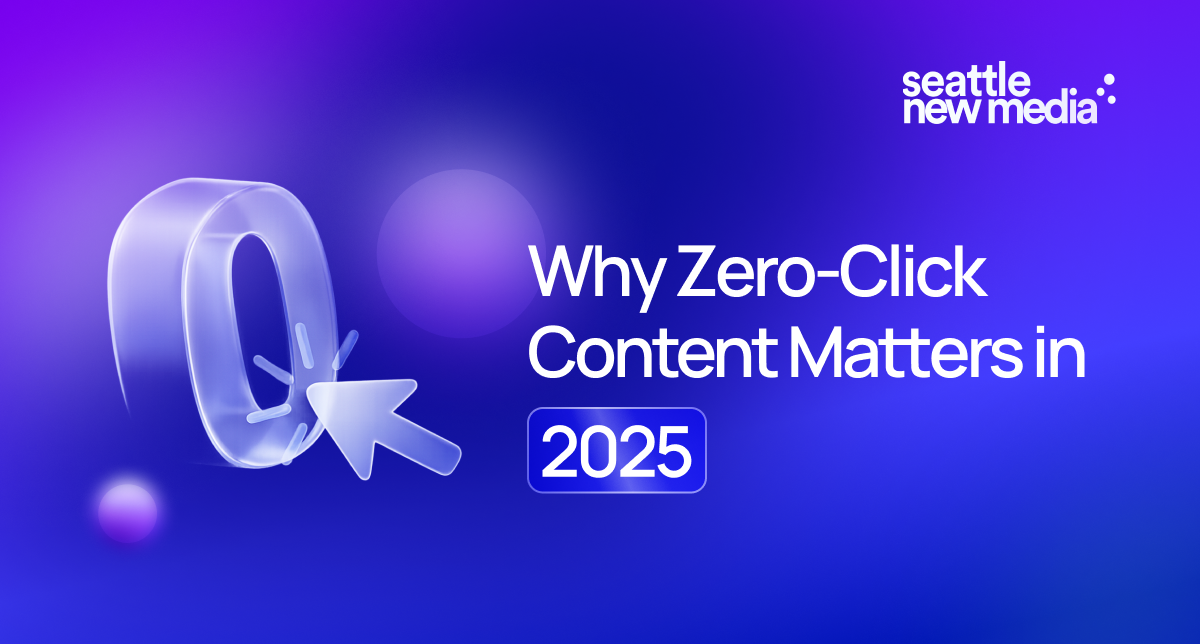-p-2000.png)


How to Personalize Your Website with Clay-Webflow Integration

While website personalization is becoming a must-have in 2025, it gives users the true meaning of tailored experiences in every single bit, from language and style to imagery. For businesses, especially e-commerce, while this drives engagement, builds trust, and helps convert visitors into potentially valuable customers, it’s indeed a big deal.
Managing personalized website contents at multiple levels such as regions, products, or customer segments becomes too complicated for an organization very soon. In such scenarios, the Clay-Webflow integration offers businesses the power to streamline the workflow, making it much easier to automate the process of personalization.
In this blog, we will talk about how this integration works, how it can save you time, its overall potential effect on your website's SEO, and how it can enhance a user's experience. Let's get started.
The Challenge of Marketing Content Across Multiple Locations
Updating or setting up the pages of various websites is one of the main issues that an organization faces, particularly when that said organization is operating in different geographic areas. It could be that your company has a particular landing page for each city that has different offers for services that would be unique to that specific area and images. While the idea is to localize and personalize content, this can often involve a lot of manual updating.
We caught ourselves in a somewhat similar situation recently. While working with a client, we encountered a requirement for tailored landing pages for different cities, each featuring specific offerings, images, and local services. Initially, we thought we could go with just manual importing and exporting into Webflow but changed our minds since it would be highly inefficient and time-consuming.
We actually started working towards this problem with something else. Then we discovered Clay, an automation tool designed for data management. While it requires some manual effort, it appears to be quite effective. Clay now has the potential to automate the complete process and update a website without a single line of code.
How the Clay-Webflow Integration Makes A Difference
The Clay-Webflow integration is perfect for those who run a website with personalized or geolocalized content. It makes automated updates and helps personalize pages while keeping them new and current without requiring any coding. The following are some features that helped businesses.
- Create Personalized Pages
The process of creating tailored landing pages for different cities, regions, or customer segments has always been a time-consuming process. With the Clay-Webflow integration, businesses can generate personalized pages with just a few clicks.
For example, you can automatically create localized offers for cities like Austin, Denver, or Miami, complete with relevant images and promotions. This automation saves time and ensures each audience receives content that resonates.
In this video, you can understand how to design and build landing pages with the Clay-Webflow integration.
- Automatic Content Updates in Real-Time
It is essential to update the content on your website periodically at regular intervals so that it can gain traction from visitors and hence improve your SEO. This integration makes sure that across all pages such updates are automated in real time, such as adjusting CTAs, updating product specs, or simply just changing images. This gives your visitors an experience that is uniform and up-to-date, while also ramping up your SEO performance.
- Personalized Pages for Individual Clients or Business Needs
The Clay-Webflow integration goes beyond geographic personalization; it also allows keeping customized landing pages for special clients, business partners, or specific customer segments. You can effortlessly add personalized logos, exclusive offers, and tailored messaging, all without any coding. This fosters stronger relationships and enhances brand loyalty.
- Manage Large Websites and Content Volumes with Ease
If you are managing a large website with extensive product catalogs, various customer segments, or multiple location-specific pages, you are well aware of how difficult it is to keep everything up-to-date and consistent. Clay-Webflow automates updates across your entire site, whether adding new city pages or launching new products. This reduces the risk of outdated content while ensuring seamless scalability in tune with your growing business.
- No Coding or Technical Skills Required
One of the biggest advantages of Clay-Webflow is that it requires no coding skills. While Clay does all the data management behind the scenes, with the Webflow visual editor, anyone can update headlines, images, and CTAs with ease. This means that even marketers and business owners without a technical background will find it easy to use.
If you’re managing an e-commerce store, you may be interested in how Webflow Ecommerce lets you scale your online store without writing a single line of code.
Why It’s Worth It
The Clay-Webflow integration streamlines website personalization and management, saving you a lot of time and effort. With this automation you can easily:
- Keep your content fresh and up-to-date
- Create personalized pages
- Manage large volumes of data
- Focus on growing your business without getting lost in the details
If you’re a business looking to fine-tune your digital marketing efforts or make your website smarter, more personalized, and easier to manage, Seattle New Media can help.
As a leading web development agency in the U.S., we specialize in innovative solutions, including Clay-Webflow integration, that streamline your digital operations. For more details, connect with us now, and we will create a more efficient, personalized, and scalable website experience.

FAQ
What is the Clay-Webflow integration?
It automates personalized content updates for websites using Clay’s data automation and Webflow’s visual editor, without any coding.
Do I need coding skills to use Clay-Webflow integration?
No, the Clay-Webflow integration requires no coding. You can easily update content using Webflow’s visual tools while Clay automates data management.
How does Clay-Webflow integration improve SEO?
Clay-Webflow integration ensures your content stays fresh and relevant with real-time updates, boosting user engagement and search engine rankings.
Marketing Team
Publisher
While website personalization is becoming a must-have in 2025, it gives users the true meaning of tailored experiences in every single bit, from language and style to imagery. For businesses, especially e-commerce, while this drives engagement, builds trust, and helps convert visitors into potentially valuable customers, it’s indeed a big deal.
Managing personalized website contents at multiple levels such as regions, products, or customer segments becomes too complicated for an organization very soon. In such scenarios, the Clay-Webflow integration offers businesses the power to streamline the workflow, making it much easier to automate the process of personalization.
In this blog, we will talk about how this integration works, how it can save you time, its overall potential effect on your website's SEO, and how it can enhance a user's experience. Let's get started.
The Challenge of Marketing Content Across Multiple Locations
Updating or setting up the pages of various websites is one of the main issues that an organization faces, particularly when that said organization is operating in different geographic areas. It could be that your company has a particular landing page for each city that has different offers for services that would be unique to that specific area and images. While the idea is to localize and personalize content, this can often involve a lot of manual updating.
We caught ourselves in a somewhat similar situation recently. While working with a client, we encountered a requirement for tailored landing pages for different cities, each featuring specific offerings, images, and local services. Initially, we thought we could go with just manual importing and exporting into Webflow but changed our minds since it would be highly inefficient and time-consuming.
We actually started working towards this problem with something else. Then we discovered Clay, an automation tool designed for data management. While it requires some manual effort, it appears to be quite effective. Clay now has the potential to automate the complete process and update a website without a single line of code.
How the Clay-Webflow Integration Makes A Difference
The Clay-Webflow integration is perfect for those who run a website with personalized or geolocalized content. It makes automated updates and helps personalize pages while keeping them new and current without requiring any coding. The following are some features that helped businesses.
- Create Personalized Pages
The process of creating tailored landing pages for different cities, regions, or customer segments has always been a time-consuming process. With the Clay-Webflow integration, businesses can generate personalized pages with just a few clicks.
For example, you can automatically create localized offers for cities like Austin, Denver, or Miami, complete with relevant images and promotions. This automation saves time and ensures each audience receives content that resonates.
In this video, you can understand how to design and build landing pages with the Clay-Webflow integration.
- Automatic Content Updates in Real-Time
It is essential to update the content on your website periodically at regular intervals so that it can gain traction from visitors and hence improve your SEO. This integration makes sure that across all pages such updates are automated in real time, such as adjusting CTAs, updating product specs, or simply just changing images. This gives your visitors an experience that is uniform and up-to-date, while also ramping up your SEO performance.
- Personalized Pages for Individual Clients or Business Needs
The Clay-Webflow integration goes beyond geographic personalization; it also allows keeping customized landing pages for special clients, business partners, or specific customer segments. You can effortlessly add personalized logos, exclusive offers, and tailored messaging, all without any coding. This fosters stronger relationships and enhances brand loyalty.
- Manage Large Websites and Content Volumes with Ease
If you are managing a large website with extensive product catalogs, various customer segments, or multiple location-specific pages, you are well aware of how difficult it is to keep everything up-to-date and consistent. Clay-Webflow automates updates across your entire site, whether adding new city pages or launching new products. This reduces the risk of outdated content while ensuring seamless scalability in tune with your growing business.
- No Coding or Technical Skills Required
One of the biggest advantages of Clay-Webflow is that it requires no coding skills. While Clay does all the data management behind the scenes, with the Webflow visual editor, anyone can update headlines, images, and CTAs with ease. This means that even marketers and business owners without a technical background will find it easy to use.
If you’re managing an e-commerce store, you may be interested in how Webflow Ecommerce lets you scale your online store without writing a single line of code.
Why It’s Worth It
The Clay-Webflow integration streamlines website personalization and management, saving you a lot of time and effort. With this automation you can easily:
- Keep your content fresh and up-to-date
- Create personalized pages
- Manage large volumes of data
- Focus on growing your business without getting lost in the details
If you’re a business looking to fine-tune your digital marketing efforts or make your website smarter, more personalized, and easier to manage, Seattle New Media can help.
As a leading web development agency in the U.S., we specialize in innovative solutions, including Clay-Webflow integration, that streamline your digital operations. For more details, connect with us now, and we will create a more efficient, personalized, and scalable website experience.
FAQ
What is the Clay-Webflow integration?
It automates personalized content updates for websites using Clay’s data automation and Webflow’s visual editor, without any coding.
Do I need coding skills to use Clay-Webflow integration?
No, the Clay-Webflow integration requires no coding. You can easily update content using Webflow’s visual tools while Clay automates data management.
How does Clay-Webflow integration improve SEO?
Clay-Webflow integration ensures your content stays fresh and relevant with real-time updates, boosting user engagement and search engine rankings.
Marketing Team
Publisher




Hi, I'm Mike!
If you are enjoying the article, feel free to subscribe to our monthly newsletter.
If you have any project requirements, please contact us.
















